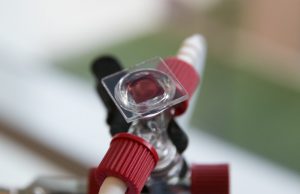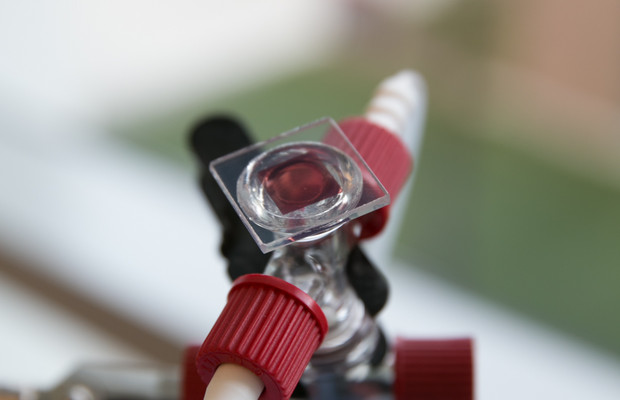The solar air battery — a hybrid of solar panels and rechargeable batteries — is now reported to achieve a 20% energy savings over traditional lithium-iodine batteries.
The patent-pending battery was developed by Ohio State University researchers last year and is making strides in the energy savings field.

The team has been redesigning the battery to maximize its effectiveness. It has transformed the original mesh solar panel into a solid sheet and has implemented the use of a water-based electrolyte inside the battery.
The use of water inside the battery has kicked the solar air battery into a new class of batteries called aqueous flow batteries. The team has coined the new device the “aqueous solar flow battery” since it’s the first-ever aqueous flow battery to possess solar capabilities.
“It’s also totally compatible with current battery technology, very easy to integrate with existing technology, environmentally friendly and easy to maintain,” said Yiying Wu, professor of chemistry and biochemistry at Ohio State.
Ohio State isn’t the first university to look into these kind of batteries. Researchers all over the world have been trying to develop aqueous flow batteries because they could potentially provide power grid-level energy storage that’s less expensive than current methods. Someday they could even generate “electrolyte fuels” for electric vehicles.
Improvements
The team’s original solar air battery contained a solar panel made from titanium mesh, but now that the battery doesn’t require any air to work (as aqueous flow batteries don’t), the team transformed the solar panel into a solid sheet called a dye-sensitized solar cell. The researchers used red dye to tune the wavelength of light it captures and converts to electrons which then supplement the voltage stored in the lithium-anode part of the battery.

The liquid aspect of the battery is that of the electrolyte that carries the electrons from the solar cell into the battery. The team used a liquid electrolyte made of lithium iodide and water (a more eco-friendly alternative that offers higher-energy storage capabilities). In the past, the researchers worked with lithium perchlorate and dimethyl sulfoxide.
Testing
Ohio State researchers compared the solar flow’s battery performance to a traditional lithium-iodine battery. When they charged and discharged both batteries 25 times, they discovered that both discharged about 3.3 volts. So what makes the solar flow battery a better alternative?
What they did find was that the solar flow battery could produce that same output as a lithium-iodine battery but with less charging. It only charged to 2.9 volts to discharge 3.3 volts, whereas the lithium-iodine battery need to be charged to 3.6 volts to achieve the same discharge.
The team determines that is an energy savings of almost 20%.
Further research
The team will continue to make improvements since the ultimate goal is to boost the solar cell’s contribution to the battery past its current 20% and even to create a “fully solar-chargeable battery.”
Story via Ohio State University.

